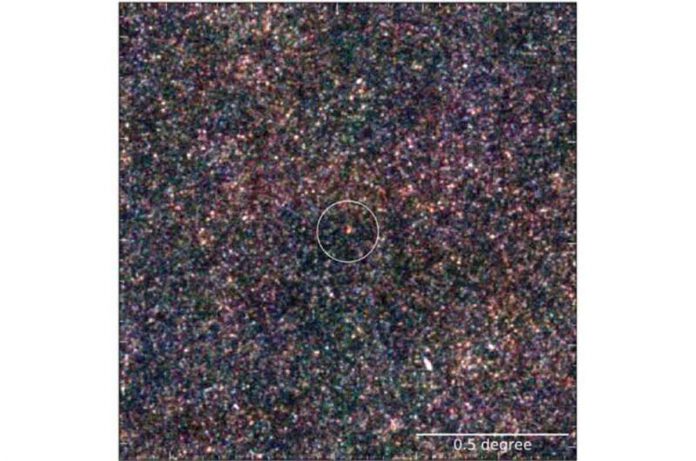The universe’s structure is frequently described as a cosmic web of filaments, nodes, and voids, with the nodes being clusters of galaxies, the largest gravitationally bound objects known. These nodes are thought to have been seeded by small-amplitude density fluctuations similar to those observed in the cosmic microwave background (CMB), which grew and collapsed into the structures seen today. While the CMB is well understood and the details of modern galaxy clusters are well described, the intermediate stages of evolution lack sufficient observations to constrain the models.
Traditional searches for galaxy clusters assume that these objects have had enough time to equilibrate and that the intergalactic gas has heated up sufficiently to be detected in X-ray emission. Astronomers use bright infrared or submillimeter emissions to detect more distant galaxies and protoclusters that are too faint to detect in X-ray.
The South Pole Telescope discovered the supercluster SPT234956 in the submillimeter band, which is so far away that its light has travelled for over twelve billion years. It is home to over thirty submillimeter galaxies as well as dozens of other luminous and/or spectroscopically confirmed star-forming galaxies. It is one of the most active star formation complexes known, producing over 10,000 stars per year.
The merger of over twenty galaxies appears to be one of its bright sources. However, the stellar mass of the system was unknown, making it impossible to determine whether the massive burst of stars was the result of extraordinary efficiency or simply arose due to the system’s enormous size.
Matthew Ashby, a CfA astronomer, was part of a team that has now completed very deep observations at optical and infrared wavelengths to determine stellar masses using spectral energy distribution (SED) analyses. They measured optical/near-infrared flux using the Gemini and Hubble Space Telescopes, and infrared flux using Spitzer’s IRAC camera.
The many detected point sources must be matched to one another at all wavelengths in order to model the SEDs. This is a difficult task, and the scientists describe the procedures they used while also addressing the serious blending that can occur due to insufficient spatial resolution in the infrared.
According to their findings, which were published in the Monthly Notices of the Royal Astronomical Society, the stellar mass in this primordial cluster is close to the value measured in nearby (“normal”) galaxies, implying that the star formation processes at work are similar to those in the local universe. The cluster does show a deficit of molecular gas, indicating that the activity is nearing the end of this tumultuous phase as the gaseous raw material for stars is dissipated.

